When most people think of large, herbivorous animals in Africa, they think of elephants. However, there is another creature that is just as big and just as important to the African ecosystem: the hippopotamus. Hippos and elephants may look similar, but they have some major differences.
Elephants are heavier, taller, and longer than hippos. Hippos are more aggressive, and elephants usually avoid conflict. Both are social animals that live in family groups. They are primarily herbivorous, but hippos also eat meat in case of nutritional deficiency or drought.
This post will explore the significant differences between these two iconic African animals.
Let’s get started.
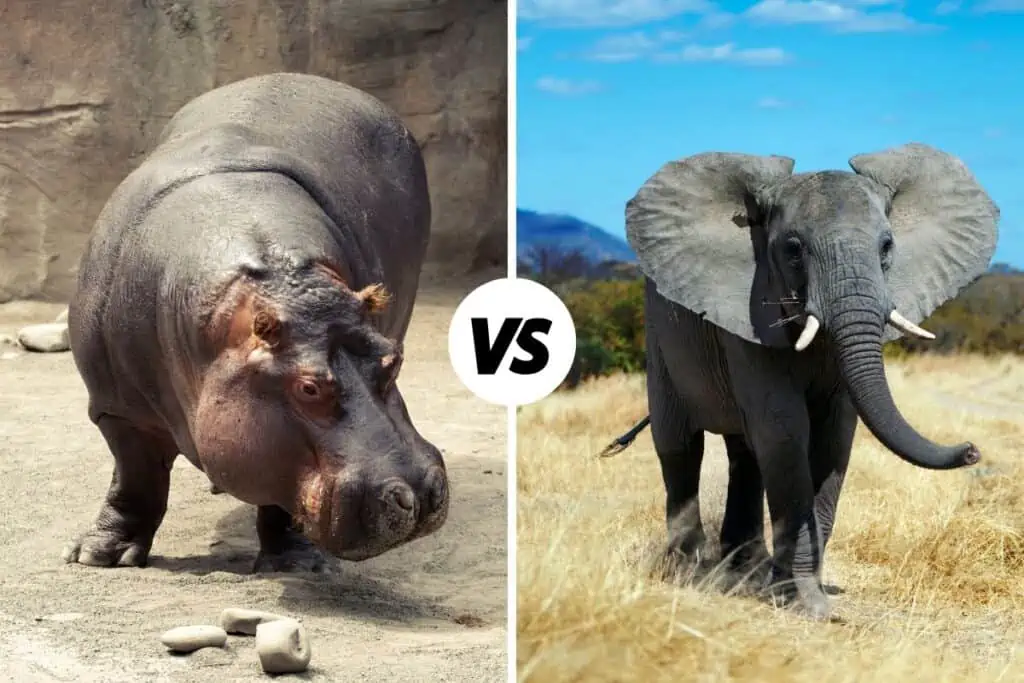
8 Major Differences Between Elephants and Hippos
Hippos and elephants have some significant differences and only really share a couple of similarities at the end of the day.
The below table highlights some of the main differences between hippos and elephants.
| Description | Hippo | Elephant |
|---|---|---|
| Appearance | Barrel-shaped, short legs, small ears, large teeth. | Long trunk, large ears, and tusks. |
| Skin And Color | Thick, mostly hairless, gray-brown skin. | Thick, leathery, gray skin. |
| Weight | Can weigh up to 4.5 tons. | Can weigh up to 7 tons. |
| Height | Up to 1.6m (5.2 ft) high | Up to 3.2m (10.5 ft) high |
| Eating Habits | Herbivore – occasional omnivore | Herbivore |
| Gestation period | 8 months | 18-22 months |
| Lifespan | Up to 50 years | Up to 70 years |
| Behavior | Aggressive to humans | Docile |
| Self-Defence | Large canine teeth and size. | Powerful trunk, tusks, size, and group numbers. |
1. Appearance
Elephants have long trunks, large ears, and tusks.
The trunk is the most noticeable organ of the body. An elephant’s trunk is its upper lip and nose combined. This long, prehensile appendage is used for everything from eating, drinking, bathing, and greeting other elephants.
Hippos are barrel-shaped with short legs, small ears, and large teeth.
Hippos also have an elongated snout but are not as mobile as an elephant’s trunk.
The only part of a hippo’s body that is truly mobile is its jaws.
2. Skin And Color
The skin of an elephant is thick and leathery and gray in color.
It acts as a shield to protect the elephant from external elements such as thorns and insect bites. It also helps to regulate the elephant’s body temperature.
Elephants have unique wrinkles in their skin that serve a functional purpose in aiding with heat regulation and adding to their distinctive appearance.
Hippos have thick skin that is almost hairless and is a gray-brown color.
The skin of a hippo is one of the most interesting and unique features of this animal. The hippo’s skin is very tough, which helps to protect it from injuries and the harsh sun.
The hippo’s skin also contains a substance called “blood sweat” or “red sweat,” which helps to protect the hippo from UV light and bacteria.
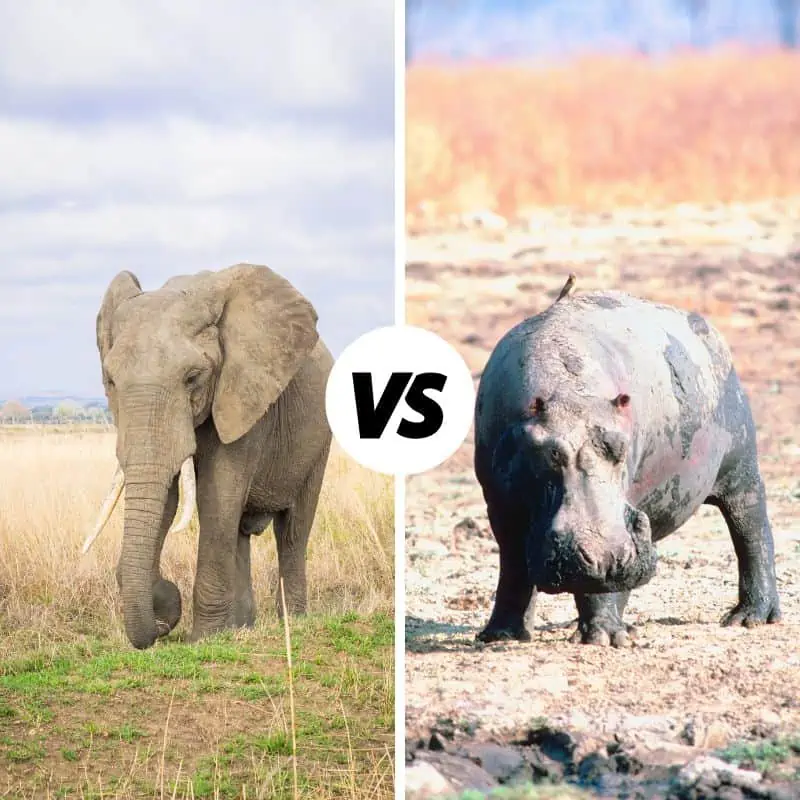
3. Size And Weight
Elephants are much larger and heavier than hippos.
The average adult elephant can weigh up to 6,000 kg (13,200 lb), and its average height is up to 3.2m (10.5 ft).
An adult hippo male weighs between 1590 – 3000 kg (3,500 to 9,920 lb), and a female weighs up to 1360 kg (3,000 lb), and their average height is up to 1.6m (5.2 ft) at the shoulder.
4. Eating Habits
Elephants are herbivores and mainly eat grass, leaves, twigs, and bark. They also eat fruits, roots, and flowers. They consume up to 149 – 169 kg (330 – 375 lb) of food and 55 gallons of water per day.
Hippos are also primarily herbivores and eat grass and aquatic plants. An adult hippo can eat up to 40 kg (88 lb) of food and drink up to 56 gallons of water daily.
However, they are also known to occasionally eat meat or carrion if their grass and a plant-based diet are not enough to meet their nutritional needs or during drought.
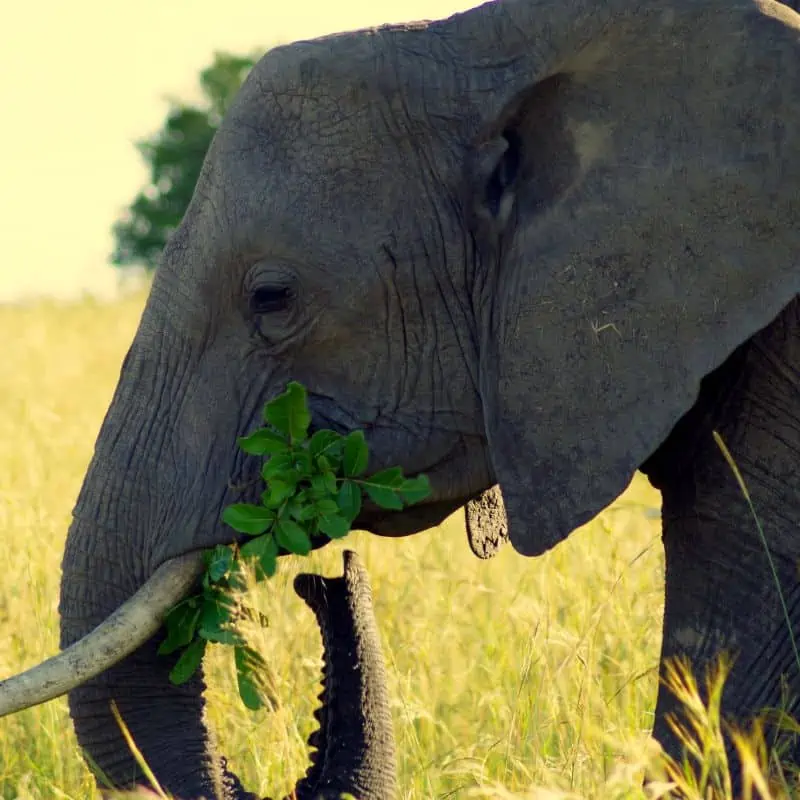
5. Reproduction Cycle
Elephants reach sexual maturity at around 14. Elephants have a more extended gestation period than other mammals, lasting 18 – 22 months.
Usually, elephants give birth to one calf at a time. The newly born baby weighs 100 kg.
After giving birth, the female elephant will usually stay with her calf for up to two years. The baby elephant drinks her mother’s milk for at least two years. The calf depends on its mother for milk and will stay close to her for protection.
Female hippos reach sexual maturity at around five years, and males at around seven years. Hippos have a gestation period of only eight months.
Female hippos usually give birth to one baby at once. The birth of twins is very rare.
Hippos are very protective of their young and stay with them until they are nearly a year old. This means that they rely on their mother’s milk for nutrition for almost one year.
6. Lifespan
The lifespan of elephants depends on different factors. If you are talking about African elephants, the average figure is 60 – 70 years. At the same time, the Asian elephant’s lifespan is 48 years.
Elephants in captivity generally have a shorter lifespan than wild ones, often due to the stress of captivity and lack of space.
Most captive elephants die before they reach the age of 40 because they cannot live in their natural environment, and they cannot roam and explore.
On the contrary, hippos live longer in captivity and can reach up to 50 years. In the wild, their life span tends to be shorter, at around 40 years.
Intensive care and plenty of food add to the lifespan of a captive hippo.
7. Behavior
Elephants are social animals that live in family groups led by a matriarch. The typical elephant family group comprises related females and their offspring.
These groups can be as small as six elephants or as large as thirty.
The matriarch is the eldest and most experienced female in the group, making all the decisions for her family.
Elephants are more docile than hippos and avoid conflicts. They are also friendly to humans.
Additionally, elephants are known for using vocalizations and physical displays to communicate with each other and their surroundings.
Hippos are also social animals and live in groups. These groups typically consist of males, females, and their offspring. The dominant male can mate with any female in the group.
These groups, known as a “bloat,” may consist of 10 to 30 members and sometimes can be as many as 200 individuals.
Hippos primarily communicate through grunts and yawns and are very dangerous.
They’re very likely to attack humans that enter their territory.
8. Self-Defence Mechanisms
Elephants are much larger than hippos, and they have a prehensile trunk that can be used for grasping objects and defending themselves.
Their tusks are also formidable weapons. Elephants also have the advantage of living in family groups and can use their numbers to defend themselves against predators.
While hippos may appear cute, they are one of the most aggressive and dangerous mammals.
They have sharp teeth that grow continuously, with their canine teeth reaching up to 20 inches in length.
Hippos can open their mouths 180 degrees to threaten their enemy. They also live in family groups but often retreat into the water, where they are safer from land-based predators.
They mainly use their tusks (teeth) for defense or fighting with their enemies.
Hippo vs Elephant: Similarities
While there are not that many similarities between these two giant mammals, some can be confusing if you’re unsure what either looks like.
The similarities between hippos and elephants include:
1. Habitat
Both hippos and elephants call Africa home (although elephants can also be found in Asia).
While hippos reside in rivers and estuaries, (African) elephants call the African savannah home, along with grasslands and forested areas.
Even though these two animals live in relatively close proximity, they don’t often cross paths. They’re more like neighbors.
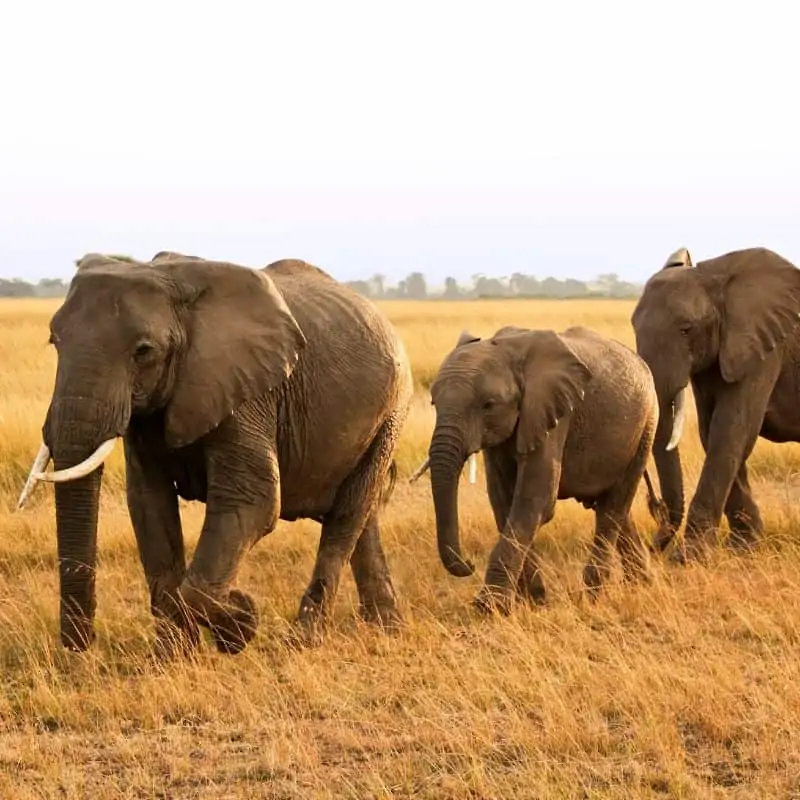
2. Endangered Status
Another unfortunate trait these animals share is that some subspecies are endangered.
The African Forest Elephant, for example, is critically endangered, while the pygmy hippopotamus is classified as endangered on the IUCN red list of threatened species.
More common species, like the common hippopotamus and African Savanna elephants aren’t that much better off either; with dropping numbers, they’re vulnerable and endangered, respectively.
3. Social Animals
As already mentioned, both hippos and elephants are social animals and live in groups.
Both animals have a designated group leader, and these groups can be pretty large.
Up to 200 animals for hippo groups and up to 30 animals for elephants.
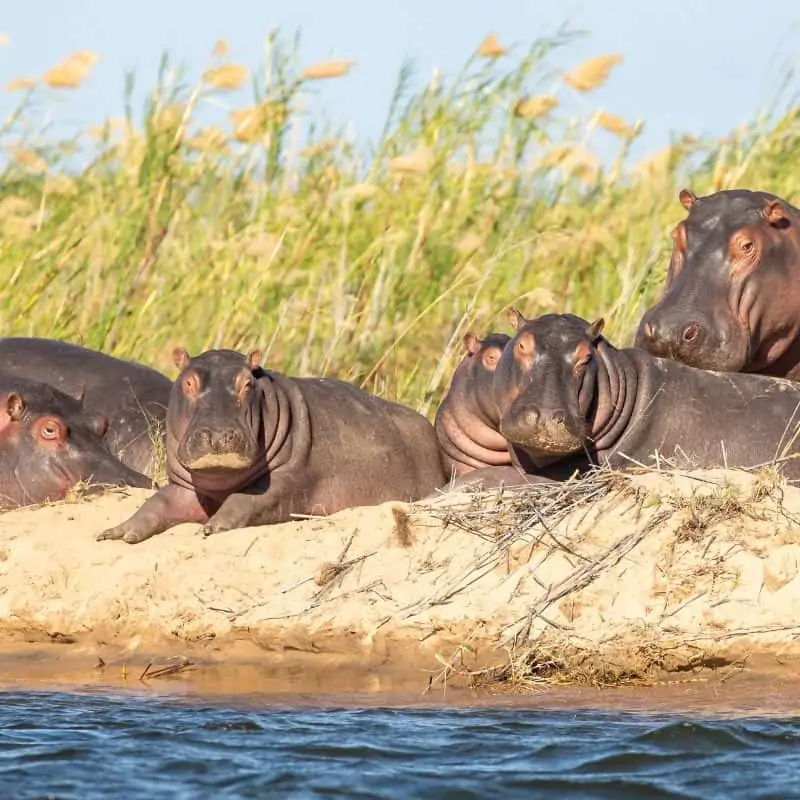
Final Thoughts On Hippo vs Elephant Differences
Both elephants and hippos are amazing animals with unique features and behaviors. Both use their size and means of communication to protect themselves and their families from predators.
While they may have some similarities, these two creatures also have many differences in terms of lifespan, behavior, and defense tactics.
So next time you see an elephant or a hippo, remember to keep a safe distance and admire from afar.
FAQs
Is an elephant or hippo better at swimming?
Neither animal can swim, even though both spend considerable time in the water. Hippos are more adapted to the water and can spend almost 16 hours in the water. Hippos can control their breath underwater for up to 5 minutes. Elephants can also spend a significant amount of time in the water, but not nearly as much as a hippo.
Which Animal Is More Aggressive?
Hippos are known to be highly territorial and aggressive. They have been reported to attack and kill humans without provocation. Elephants, on the other hand, typically only become aggressive if they feel threatened or provoked.
Which produces more calves?
A female hippo typically gives birth to one calf every two years. A female elephant can have a baby every four to five years and usually only has one calf at a time. So, in general, female hippos have the potential to produce more offspring over the course of their lifetime.
